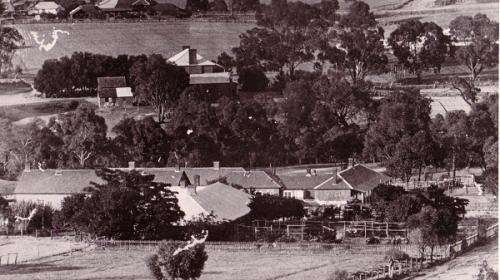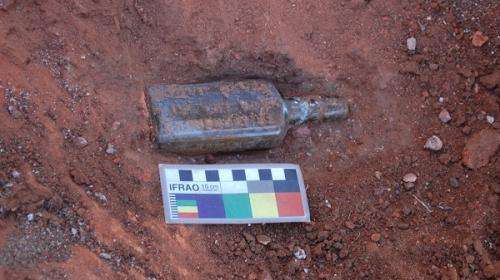Digs uncover reformative work colonies

Excavations of the Toodyay and York convict hiring depots in WA's Wheatbelt has confirmed that there were stark differences between convict systems in eastern and western Australia.
UWA archaeologist Dr Sean Winter, whose team conducted the digs, says the Swan River Colony had two systems operating at the same time.
A punishment system operated out of Fremantle Prison, and a reform system based on the "Ticket of Leave" allowed convicts to work for private sector employers on release.
"It was set up 60 years after New South Wales and under a completely different penal theory," he says.
"Almost every convict who came here had their Ticket of Leave very early, and the whole setup was designed to be a system of labour for the colony."
He says his archaeological digs show convict hiring depots were not penal sites.
"There is no evidence of walls or any kind of restrictive structures around the outside of the depots," he says.
"They weren't locked up at night, they could come and go as they pleased, and they were even able to do things like access guns so they could go hunting.
"We found that there was a lot of alcohol consumption."

An 1860s hair tonic bottle made in New York, in-situ in a trench at the Toodyay Convict Depot Superintendent's Quarters. Credit: Sean Winters
Dr Winter's team analysed the quality and construction of the few buildings still standing at the Guildford and York convict depots—from the viewpoint of archaeology, not architecture.
As convicts built eight of the colony's nine convict depots to identical Royal Engineers plans, it was easy to identify the buildings' uses.
Using old maps as a guide, they did geophysical surveys at the Toodyay and York sites using ground-penetrating radar and a magnetometer to find sub-surface remains of the buildings.
They found some that were not included on the maps.
He says the abundance of metals on the sites rendered the magnetometer useless, but the ground-penetrating radar allowed them to target exploratory excavation trenches.
He likens this to "keyhole surgery".
The ground images allowed them to conduct high-quality excavations, of rubbish sites and parts of the buildings' footprints, disturbing only about one per cent of the ground on the two sites.
They found some 25,000 artefacts, including about 3,500 from the convict era.
Dr Winter says very little convict archaeology had been done in WA as earlier generations preferred to ignore convict heritage.
The surveys form part of his 2013 PhD thesis, which examines the unique nature of the Swan River Colony's convict program in the context of world migration.
More information: Winter,S (2011): A Preliminary Report on Archaeological Investigations at Two Western Australian Regional Convict Depots in Australian Archaeology 73, pp 65 – 68. The report is available online: www.academia.edu/1126194/A_Pre … ional_Convict_Depots
Provided by Science Network WA



















